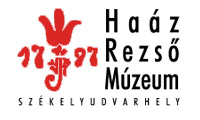Kovács Petronella (szerk.): Isis - Erdélyi magyar restaurátor füzetek 10. (Székelyudvarhely, 2010)
B. Perjés Judit - Domokos Levente - Puskás Katalin: Tíz nap a "Nagy-Küküllő felső folyása mentén" avagy hazi és vendég restaurátorok a székelykeresztúri Molnár István Múzeum születő állandó kiállításán
National Museum could be losened with the mobile anode method used in the cleaning phase, and then they could be removed by chemical wiping. 3. The Saint Florian statue belonging to the so-called “Nyírgyháza fire brigade relics” found during the uncovering of a refugee camp at Linz in 1986 was made with a mixed technology. Certain parts are bronze moulds, other ones were embossed from a copper plate, and the assembled object was coated with silver. The corrosion products of the bronze showed through the silver coating. The silver coating was applied on the damaged areas with the mobile anode method. 4. Numerous 20th century objects prepared from plates and hand-painted or stencilled with oil paint are preserved in our museums and many of them were treated with the mobile anode method, which can excellently be used for removing the iron corrosion that shows through the electroplated surface where the paint layer peeled off. 5. The four-grade students of the Applied Art Conservation Department of the Hungarian University of Fine Arts specialised in metals and goldsmith’s craft have conserved numerous engraved, gilded silver laurel wreaths preserved in the collection of the Institute and Museum of Theatre History as their thesis works. The missing elements of the wreaths were replaced with silver. The completions and the worn surfaces of the objects were locally gilded by a mobile anode. 6. In 2008, students of metal and goldsmith’s work conservation conserved several objects within the frames of their diploma works, and they applied the mobile anode method. One of them was a fire-gilded silver ornamental belt decorated with a filigree technique which is in the possession of the Serbian Diocesan Museum. The filigree and cloisonné enamel ornaments of the belt were deformed and incomplete. The student replaced the missing elements with silver and gilded them by mobile anode electroplating. 7. The graduating student prepared the missing elements of a silver, firegilded water consecrating cross made mostly with filigree and granulation techniques from silver according to the original technology, and then gilded the surfaces by the mobile anode method. 8. A late 19th century sanctuary lamp prepared in the workshop of Gyula Jungfer one of the most significant ornamental blacksmiths of Hungary was conserved within the frames of a diploma work. The object is a gilded brass blacksmith’s work. During soldering, the precious metal coating perished in small areas in the basket of the lampholder of the sanctuary lamp, which had broken into several parts. Mobile anode gilding was appropriate for its restoration. Gábor Séd Object conservator MA Hungarian National Museum Department of Conservation Training and Research 1450 Budapest 9. pf. 124 Phone: +36-1-210-1330/126 E-mail: sed@freemail.hu Judit B. Perjés — Levente Domokos — Katalin Puskás Ten days „on the upper reach of Nagy-Küküllő” or local and guest conservators at the creation of the permanent exhibition of the Molnár István Museum of Székelyudvarhely The exhibition titled “Millennia on the upper reach of Nagy-Küküllö” was opened in the Molnár István Museum of Székelykeresztúr on August 7,2009. The exhibition occupies 8 rooms on a surface of about 140 m2. Five of them are occupied by archaeology, two by local history, while the room exhibiting grave-clothes from the crypt of the Matskási family connects the two units. This exhibition is the only archaeological exhibition in Hargita County. The high standard exhibition, regarding either professional or scenic respects, could be realised with the help of numerous private persons, entrepreneurs and local leaders and with the contribution of a number of specialists and volunteering friends of the museum. Beside the staff of the museum, a group of five Hungarian conservators and two conservator students helped in the preparation of the objects for the exhibition. In this paper, a short selection is presented from the complete, partial or minimal conservation of the exhibited objects. 1. Ceramics: The formerly already conserved ceramic objects intended to be exhibited were completely or partly conserved once more to meet the standards of the new exhibition. The medieval stove tiles completed with white plaster meant the greatest task. 2. Metals: From among the metal exhibits, the 12th—13th century metal finds, which were close to perishing, could be cleaned, conserved and prepared for exhibition with wheelblast equipments, polishers and other appliances suitable for chemical-free cleaning. The surface of a poorly preserved copper cauldron dated from the 17,h century, the metal core of which was very weak, could be freed from the dirt and then glued and completed by applying chemical packing. 3. Wood: From among the archaeological objects, white salt precipitation had to be removed from the elements of a 14th century wooden bucket, and then the wood material had to be consolidated with saturation. The elements of an especially interesting and rare find, a well dated from the 14th—15th century were cleaned but they did not need consolidation. A scenic installation was built around the well, which illustrates it in a vertical crosssection in the moment of its uncovering, and so the visitors can get an idea of its structure as well. The churchyard gate from 1694 separated two historical periods. The gate had stood in the open for decades. The wooden material, which had been treated with linseed oil, was strongly deteriorated. After cleaning and consolidation, the individual elements were completed and then the missing top part was reconstructed. In the rooms illustrating local history, there were 19th century interiors, a marquetry table, an upholstered armchair, and a two-door wardrobe. 195
